Let's see the surroundings in Sopron together, either in Hungary or abroad.
Let's see nearby sights from the Pan-European Memorial Place to Pannonhalma, from Eisenstadt to Vienna.
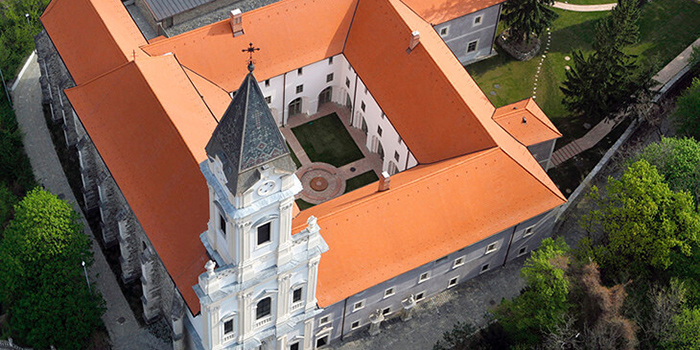
SOPRONBÁNFALVA
Maria Magdalena church: a church from the Middle Ages with contemporaneous frescos.
Mountain church: first it used to be the church of Pauline, than of Carmelite monks. Originally a Gothic one.
BRENNBERGBÁNYA
Miner's church: built in the first half of the 20th century, its inner part reminds of a mine path.
Miner's museum: An exhibition recalling the past of the first and deepest coal mine of Hungary.

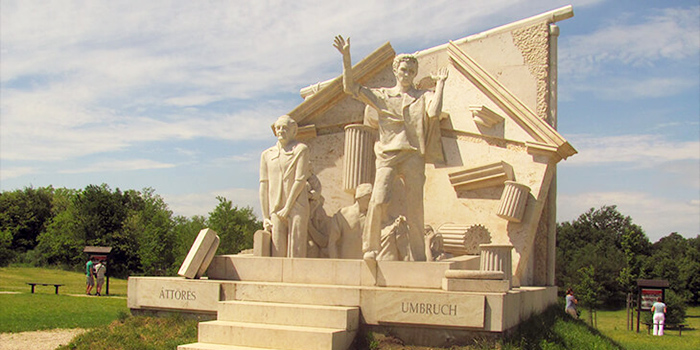
SOPRONPUSZTA, PÁNEURÓPAI PIKNIK EMLÉKHELY
It commemorates the events around the breaking of the iron curtain near Fertőrákos in 1989 with its fountain and wooden hearboard.
This place was the scene of the Paneuropean Picnic on 19 August 1989. The events of the time and the opening of the border on 10 October due to a Government decision launched the process of the demolition of the Berlin Wall and the reunification of Germany.
Border-crossing for pedestrians.
FERTŐRÁKOS
Mithras Sanctuary: at the border. The sanctuary of Mithras, Persian god of the Sun from the Roman Ages.
Main street: remnants of the town wall, pillory column, watermill with a sundial, former castle of the Bishop, memorial for expatriated Germans.

Quarry: The quarry of especial beauty from the Roman Age of Fertőrákos can be visited as an open-air museum. The cave reminiscent of the magical world of the rock temples in Egypt provide a natural scene for opera performances in the summer.
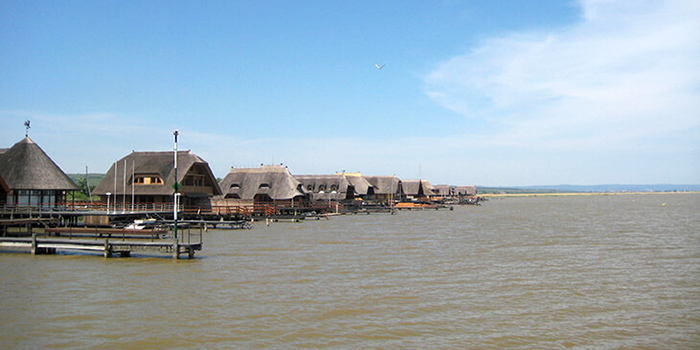
The lake desiccated several times, which happened between 1867 and 1871 for the last time. Opportunity for bathing, sailing, surfing and boating. Now we can cross the border by the water, too.
Fertő-lake
Part of the Fertő-Hanság National Park, the Lake was declared a biosphere reservoir by the UNESCO in 1979 and is recognised as a wild water of international fame of Europe. For the protection of several rare plants which can be found nowhere else and the more than 200 bird species which nest or pass here, certain parts of the National Park can be visited only with authorisation and escort. The Fertő is the westernmost representative of the steppe lakes of Eurasia and, at the same time, the largest salty (alkaline) lake of Europe. The water is shallow and its depth is subject to constant change but, on average, it does not reach one metre.
Nagycenk
Church: It was planned by Miklós Ybl at the request of István Széchenyi. We can find the statue of István Széchenyi in front of the building. István Széchenyi and several members of the family are buried in the Szécheny mausoleum in the cemetery next to the church.
Museum railway: it starts from the castle, it is of narrow gauge and hauled by steam. Next to this, old steam engines are exhibited.
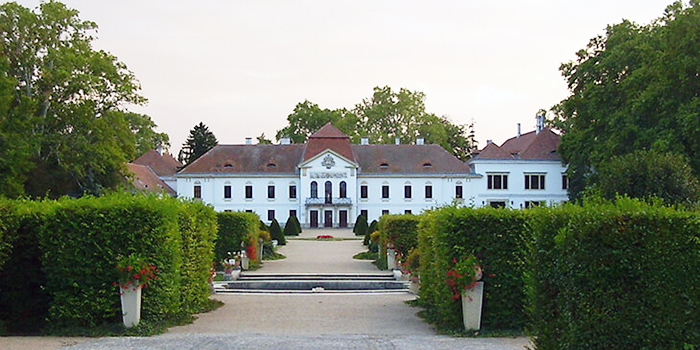
Széchenyi castle: Its Baroque castle had been the residence of the noble Széchenyi family since the 18th century; now it is a museum. This was the favourite place of residence of István Széchenyi, the "greatest of Hungarians". The famous line of lime-trees being 2.6 km long planted in 1752 leads us from the Castle to the grave of Béla Széchenyi and his wife. The Roman Catholic Church was built in Romantic style in 1864, according to the plans of Miklós Ybl. With its Classicist entrance hall, the building of the Szécheny Mausoleum (1810) is to be found in the cemetery next to the church where István Széchenyi is buried, too.
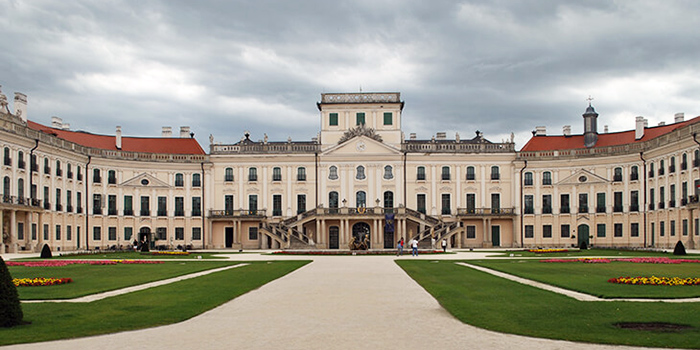
Fertőd
Eszterházy Castle: One of the richest noble families of the country, the Esterházy family built their marvellous castle, the "Hungarian Versailles" between 1720 and 1766. The excellent building complex of the castle, with the exception of the Baroque theatre, remained in its entirety. The majority of the exhibitions of the museum operated here reminds of the Golden Age of the building which was the time of Miklós "the Bright" Esterházy (1762-1790). Joseph Haydn, a genius determining forms of music of the 18th century also lived and worked here from 1766 to 1790.
It served as the scene of ceremonies, balls, parties and concerts. Now it is being completely renovated. There are concerts in the castle from spring to autumn.
House of Music: it is a music school at present. Memorial exhibition for Haydn.
FERTŐSZÉPLAK
Village museum: a complex of five peasant's houses from the middle of the 19th century. Exhibition and furniture of flats.
Baroque church of the parish and a Calvary.
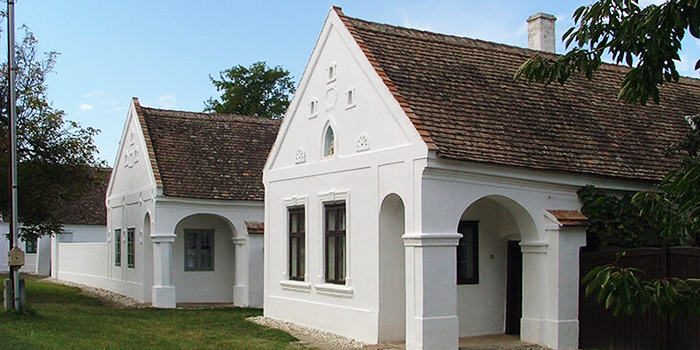
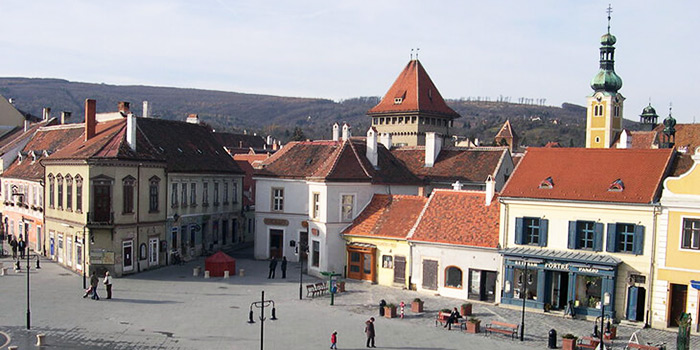
KŐSZEG
It is one of the smallest towns of Hungary. The castle built in the 13th century was named after the captain Miklós Jurisics who, with the help of the inhabitants, was successful to stop the Turkish army marching against Vienna in 1532. The guild trade, commerce, vine and wine production and schools of the town have a long past. The town centre within the town walls which are to be seen at several places up to this day was avoided by the storms of the history so houses on Jurisics tér and in the nearby streets managed to keep their original form.
MEDICINAL BATH OF BÜK
Bükfürdő is situated 45 km from Sopron. Being the 2nd largest medicinal bath of the country, it welcomes its guests who wish to bath with 26 pools (being medicinal, thermal and of drinking water). Its thermal wells provide us with a medicinal water of excellent curing qualities, containing alkali elements and hydrogene-carbonate, of 55°C the fluoride, iodide and iron contents of which is also important.
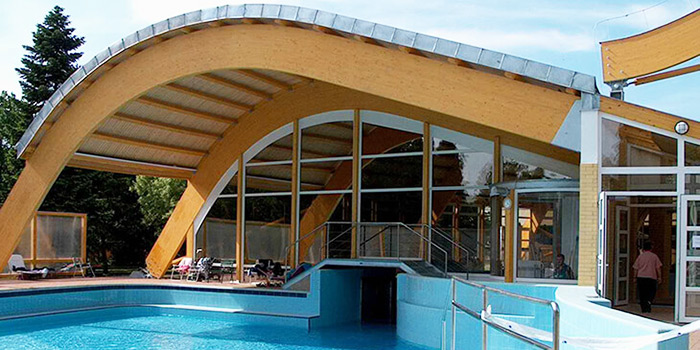

Sárvár
Nádasdy Castle: owned by the Kanizsai and than by the Nádasdy families. In the first half of the 20th century, it was owned by the Royal Wittelsbach family of Bavaria. Now it is a cultural centre and museum.
Botanical garden: next to the castle, we can find the park of the Scientific Institute of Forestry.
Medicinal and Wellness Bath in Sárvár: The Medicinal and Wellness Bath in Sárvár offers crystal clear water, and a wide range of medicinal and wellness services for its guests. Due to the unique offer and the extraordinarily high quality of the service, the bath was granted the Quality Award of the Hungarian Wellness Society in the Wellness Center category in 2004 and in the Wellness Medicina category in 2005.
Apart from the pools full of high quality medicinal water, an experience bath and a baby bath is also provided to entertain all the members of the family.
Szombathely
The town keeps the remnants of its forerunner, Savaria, being the centre of the former Roman province but it also has a lot of monuments from the Baroque age. Inhabitants of the town take due care of monuments from the Roman Age and also regularly commemorate Saint Martin, the later Bishop of Tours who was born here according to traditions. Legend says that the Saint Martin church of our time was built on the foundations of the birthplace of Saint Martin.

Szombathely has been an episcopal seat since 1777 and, accordingly, the town is full of Christian monuments. The Museum of Church History and the treasury is to be found in the building of the episcopal palace. The cathedral features several paintings by Maulbertsch.
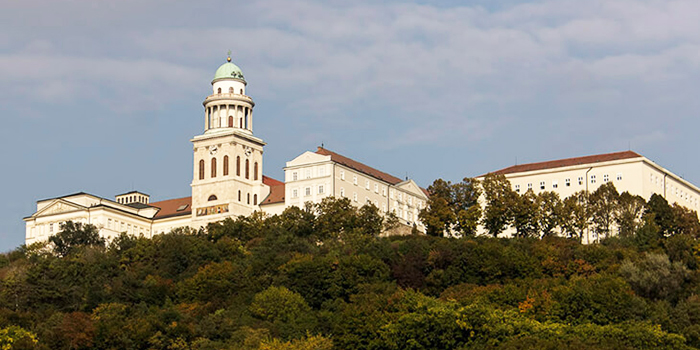
The environment of the abbey, that is, the Virgin Mary chapel, the Millennium memorial, the arboretum, the park forest and the lookout may be visited without guiding.
Pannonhalma
Being a thousand years old and founded in 996 by Prince Géza, the General Benedictine Abbey in Pannonhalma has been part of the World Heritage since 1996. Late Romanesque and early Gothic remnants from the Middle Ages were complemented with Baroque and Classicist building parts. Major sights are the basilica and the undercroft, the ambulatory, the library with its more than a hundred thousand books, the foundation letter of the Abbey of Tihany in its archives which is the oldest Hungarian language relic from 1055 and the wine-cellars of the abbey.
Győr
Museum of the Diocese
Carmelite church: baroque
Xantus János Town Museum at the Széchenyi square and a pharmacy museum at the same place. A Benedictine church, formerly belonging to the Jesuits: at Széchenyi square It features frescos by Paul Troger, renowned Austrian Baroque painter.
A memorial for the Ark of the Covenant: at the feet of the Káptalandomb. Presented by Kaiser Charles VI. The casemates of the Castle feature the museum and a stone storage.
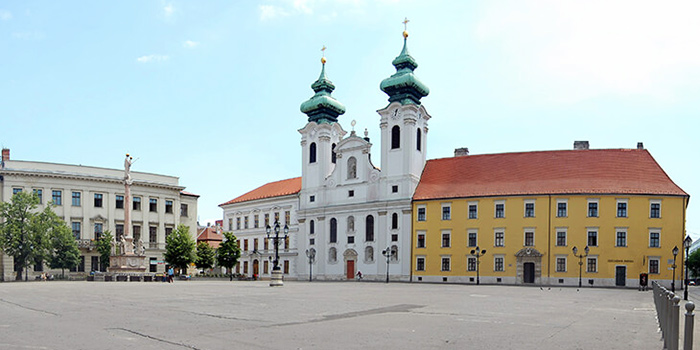
One of the Hungarian towns with the most monuments, Győr was granted the Europe Award of monument protection as a recognition of the reconstruction of the Baroque city centre. From among the monuments, we have to highlight the Bishop Castle originating from the 13th century and completed in the 14th and 15th centuries. The episcopal cathedral dedicated to Virgin Mary originates from the 12th century, however, the Romanesque church was reconstructed in Gothic and then in Baroque style.
Its chapel keeps one of the most valuable treasures of Hungarian goldsmith's art, that is, the herma of King Saint László which was prepared for the canonisation of King László I. The original herma was destroyed in 1405 in fire. The copy of the reliquary in Győr was made between 1405 and 1425.
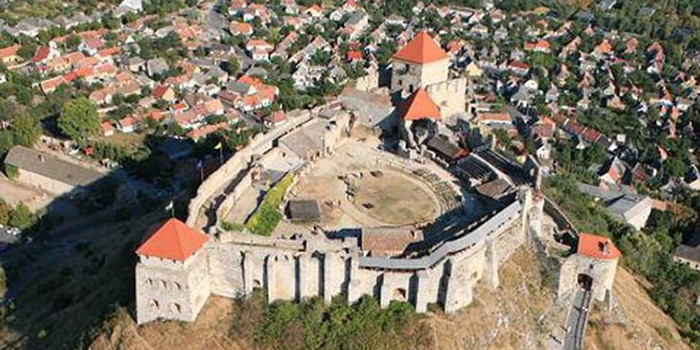
SÜMEG
Castle: from the Middle Ages, partly reconstructed. In and under the castle: knight's games and feasts
Church of the parish: the frescos of Maulbertsch, famous Austrian Baroque painter, and the main work of the artist
KESZTHELY
Festetics castle: from the 18-19th centuries. It presents a castle museum and a collection of trophies. The first agrarian higher education institution of Europe, the Georgikon was founded in Keszthely by Count György Festetics.
Georgikon village museum: the presentation of old agricultural tools
Museum of the Balaton: exhibitions of local history and the Balaton
Puppet Museum
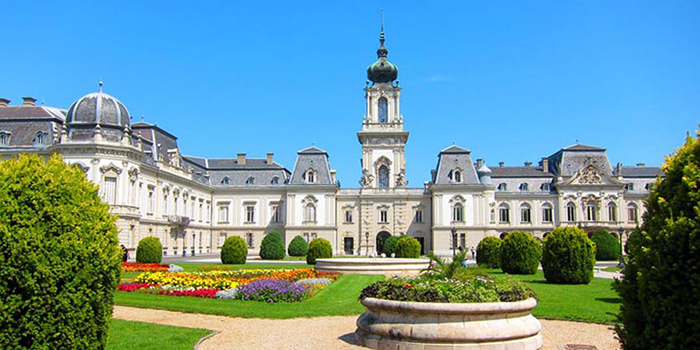
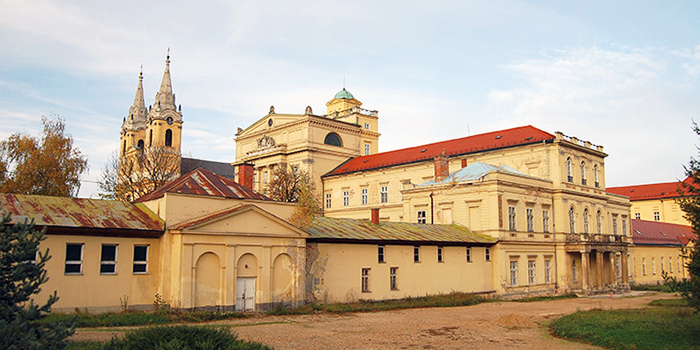
ZIRC
Cistercian Abbey: founded in 1182 by King Béla III. The church and cloister from the Middle Ages was destroyed by the Turkish. Buildings which still can be seen were built in the 18th century. The cloister functions now as a library and a museum and is surrounded by a botanical garden. Frescos of the church were recently restored in their original form and, before, they used to be covered with paint.
HEREND
The village is the birthplace of the world famous Herend porcelain. A The forerunner of the Herend Porcelain Manufacture was founded by Vince Stingl in 1826. The manufacture was purchased in 1839 by Mór Farkasházy-Fischer and it was him to make the manufacture and the porcelain production flourish.
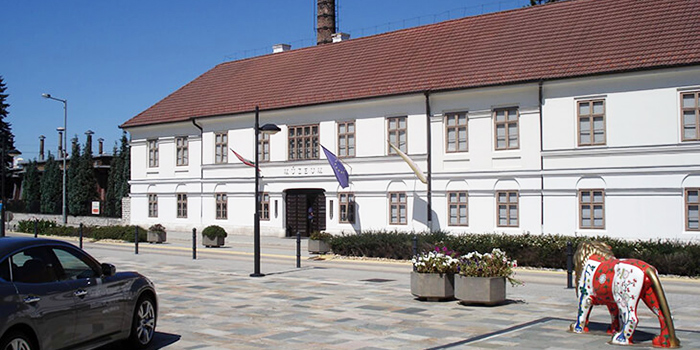
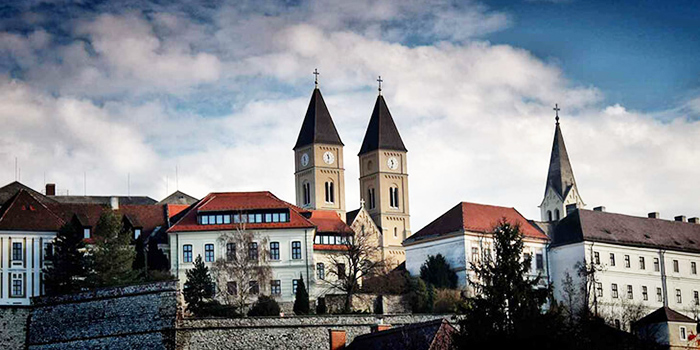
Franciscan and Piarist churches in the castle
Veszprém
Cathedral of the Archbishop: originally built in Roman style in the Middle Ages. It was destroyed by the Turkish and its present form is from the 19th century with only a few original details. It features relic of Queen Blessed Gisella, wife of Saint Stephen.
Gisella Chapel: from the Middle Ages, with original frescos.
On the lookout terrace, we find statues of Saint Stephen and Blessed Gisella.
Built on seven hills, Veszprém is often referred to as town of the queens: its historical and architectural monuments originate from the age of the occupation of Hungary. It became the town of the queens due to Gisella, the wife of King Saint Stephen, and a major centre of the Catholic Church due to the episcopacy founded here in 1001. The Saint Michael basilica in the castle, being a wonderful Baroque complex of buildings, is referred to as the first and oldest cathedral of Hungary by contemporary documents. The role of the Catholic church has been determining in the life of Veszprém up to this day since the town has been the Archbishop's seat since 1993.
The Northern shore of the Lake Balaton
Balatonfüred: medical centre and bath A round church from the first half of the 19th century. The houses of the writer Mór Jókai and the actress Lujza Blaha. A traditional Anna Ball at the end of July. Opportunity for bathing, sailing.
Badacsony: a mountain enjoying nature protection, with basalt "organ pipes" of vulcanic origin. Wine region, its main types being szürkebarát and kéknyelű.
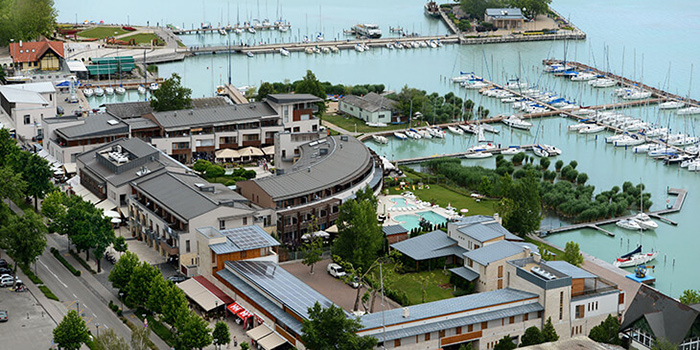
Tihany: Benedictine Abbey founded in 1055. The founder, King Andrew I is buried in its undercroft. Organ concerts are organised in its church. The Tihanyi-peninsula enjoys nature protection. The production of lavender and the sale of lavender products. Folk architecture remnants.
Austria
Kismarton - Eisenstadt: With its 13,000 inhabitants, at the feet of the Leitha mountain in the centre of Burgenland, it is the smallest of the provincial capitals of Austria, nevertheless, the town formerly being the residence of Esterházy princes offers a lot of sights for tourists.
Memorial exhibition in the residential house of Haydn. Saint Martin Cathedral of the Bishop, reconstructed in the Middle Ages. Mountain church: the grave of Haydn and a Calvary from the beginning of the 18th century.
Slovakia - Bratislava
The former coronation capital of Hungary and the scene of the meetings of the Parliament. Coronation events were held at Saint Martin hill. Sights of the city centre: the building of the former Parliament, now the library of the university, the building of the university built by King Matthew, the "green house" at the corner of the main square, the scene of the meetings of the upper chamber of the Parliament, the old Town Hall, now a museum, the palace of the cardinal, now a gallery and the exhibition place of famous wall carpets. A lot of palaces of the Hungarian aristocracy. The Michael gate, the former town gate. The castle of Bratislava is now used by the Government of Slovakia.
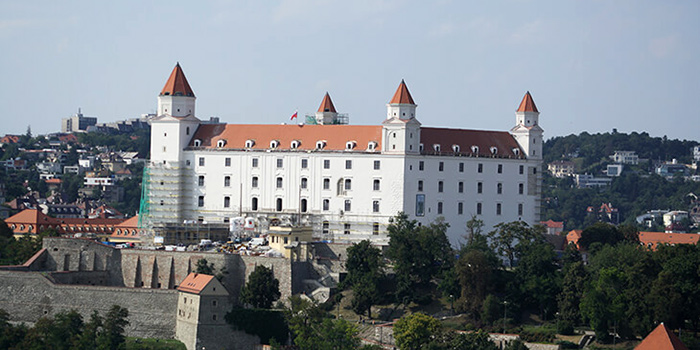
The castle of Vöröskő: now a museum
The remnants of the castle of Dévény
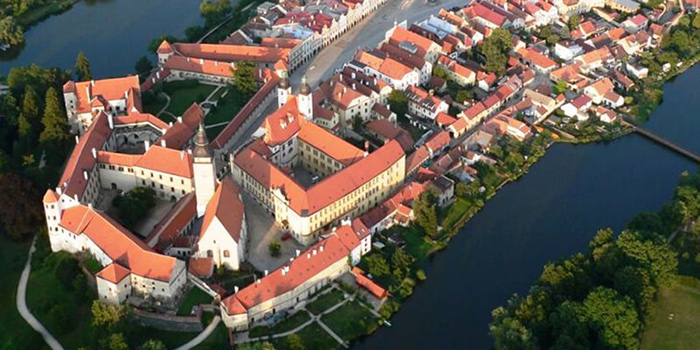
CSEHORSZÁG - CESKY KRUMLOV
Nice old parts from the old town and a huge castle with a beautiful garden.


